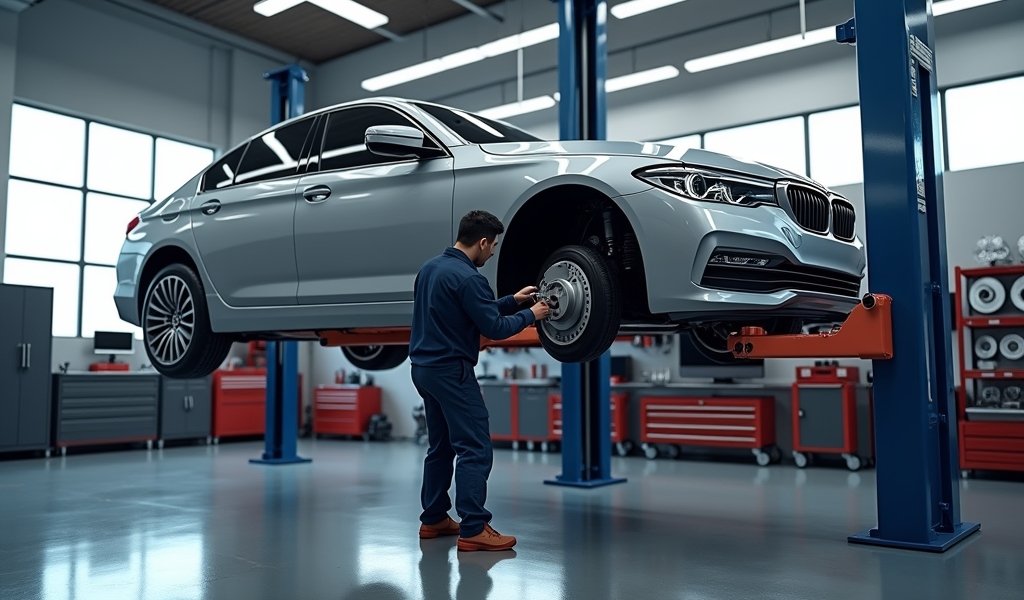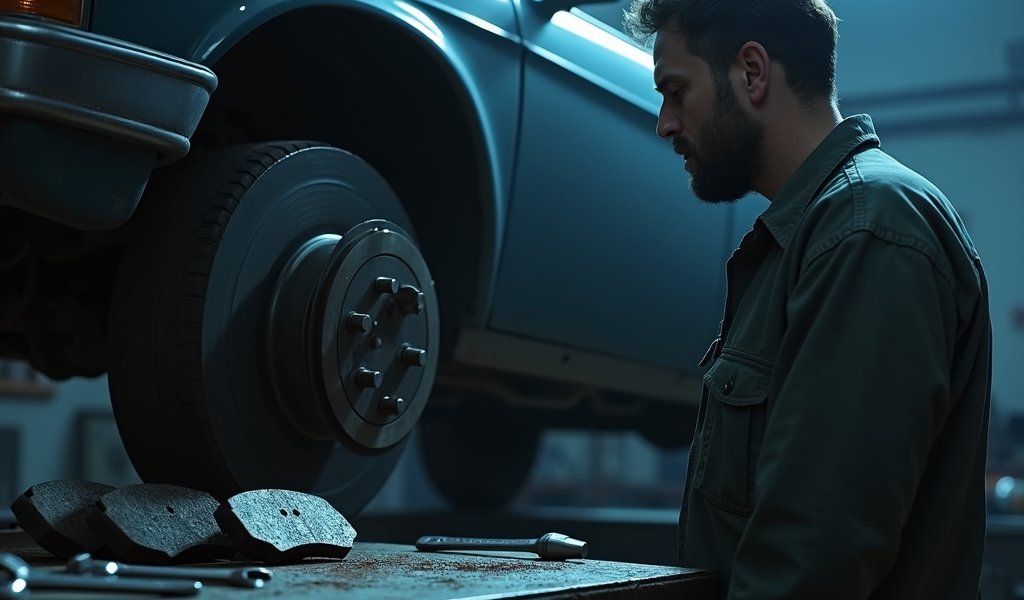Overview
This article provides five practical tips to reduce car brake service costs without compromising safety: performing regular inspections and maintenance, comparing quotes from multiple shops, considering DIY for simple jobs, selecting quality parts at reasonable prices, and timing brake service strategically to coincide with promotions or other maintenance. The guide emphasizes that proactive brake maintenance not only saves money but also ensures vehicle safety, with typical costs ranging from $150 for basic pad replacement to over $1,000 for complete system overhauls.
Table of Contents
- Understanding Brake Service Costs
- Signs You Need Brake Service
- Tip 1: Regular Inspection and Maintenance
- Tip 2: Compare Quotes from Multiple Shops
- Tip 3: Consider DIY for Simple Brake Jobs
- Tip 4: Use Quality Parts Without Overspending
- Tip 5: Timing Your Brake Service Strategically
- Conclusion
- Frequently Asked Questions
Understanding Brake Service Costs
When it comes to car brake service cost, many drivers experience sticker shock at the repair shop. As a mechanic with over 15 years of experience, I’ve seen countless customers wince at brake repair estimates. The truth is, brake service costs can vary dramatically—from $150 for a basic pad replacement to well over $1,000 for a complete system overhaul. But here’s the good news: with some insider knowledge, you can significantly reduce these expenses without compromising safety.
The car brake service cost depends on several factors: the make and model of your vehicle, the type of brake components needed, labor rates in your area, and whether you’re dealing with front brakes, rear brakes, or both. Luxury vehicles typically cost more to service than economy cars, sometimes by a factor of two or three. However, regardless of what you drive, the tips I’m about to share can help you keep more money in your pocket while ensuring your braking system remains in top condition.
Understanding what you’re paying for is the first step to making informed decisions. A typical brake service includes replacing the brake pads, resurfacing or replacing rotors, and inspecting the overall system for safety. Additional components like calipers, brake lines, or master cylinders can add to the average cost of car service significantly. By breaking down these costs, you’ll be better equipped to identify savings opportunities.
Signs You Need Brake Service
Before diving into cost-saving tips, let’s talk about how to recognize when brake service is actually needed. Catching brake issues early can prevent more expensive repairs down the road. Your vehicle will usually give you clear warning signs when the braking system needs attention.
The most obvious indicator is a squealing or grinding noise when you apply the brakes. This typically means your brake pads have worn down significantly—possibly to the metal backing plate. If you hear grinding, get to a shop immediately, as this can quickly damage your rotors and lead to much higher repair costs. According to a National Highway Traffic Safety Administration study, neglected brake issues are among the leading causes of preventable accidents.
Other warning signs include:
- Vibration or pulsation in the brake pedal
- Vehicle pulling to one side when braking
- Soft or spongy brake pedal feel
- Longer stopping distances than usual
- Brake warning light illuminated on your dashboard
If you notice any of these symptoms, don’t delay getting your brakes checked. While we’ll discuss cost-saving strategies, never compromise on brake safety. A well-functioning brake system isn’t just about saving money—it’s about protecting lives.

Tip 1: Regular Inspection and Maintenance
The most effective way to reduce car brake service cost is through preventative maintenance. I can’t stress this enough: regular brake inspections can save you hundreds of dollars over the life of your vehicle. Think of it like dental check-ups—a small investment in prevention beats an expensive emergency procedure any day.
Make it a habit to visually inspect your brake pads every 6 months or 6,000 miles. You can often see the pad material through the wheel spokes. If the pad material looks thin (less than ¼ inch), it’s time to consider replacement. Additionally, having your brakes professionally inspected during routine complete car service can catch issues before they become expensive problems.
Another simple maintenance tip is to avoid riding your brakes. That habit of keeping your foot lightly on the brake pedal? It’s costing you money by accelerating pad wear. Similarly, aggressive driving with sudden stops puts unnecessary strain on your braking system. By adopting smoother driving habits, you can extend the life of your brake components by as much as 50%, according to mechanics at the Car Care Council.
Don’t ignore brake fluid maintenance either. Most manufacturers recommend changing brake fluid every 2-3 years. Fresh fluid prevents internal corrosion of brake components and ensures optimal braking performance. This simple maintenance step typically costs between $80-120 but can prevent more expensive hydraulic system repairs down the road.
Tip 2: Compare Quotes from Multiple Shops
When brake service becomes necessary, one of the most effective ways to control costs is by shopping around. In my years working as both a mechanic and shop manager, I’ve seen price differences of $200 or more for identical brake jobs between shops in the same city. This isn’t always because someone’s trying to rip you off—different shops have different overhead costs and pricing structures.
Get detailed written estimates from at least three different repair facilities. Make sure each quote specifies exactly what’s included: parts quality level, warranty terms, and whether they’re replacing or resurfacing rotors. Be wary of quotes that seem unusually low—they might not include all necessary services or may use inferior parts.
Don’t limit yourself to traditional repair shops. Consider these alternatives:
- Independent brake specialists who focus exclusively on braking systems
- Mobile mechanics who come to your location (often with lower overhead costs)
- Dealership service departments (sometimes competitive for specific makes)
- Vocational schools with supervised student mechanics (significantly discounted labor)
When comparing quotes, also consider the warranty offered. A slightly higher price might be worthwhile if it comes with a significantly better warranty. Many quality shops offer lifetime warranties on brake pads and shoes, which can provide substantial long-term savings for vehicles you plan to keep.
Don’t be shy about negotiating, either. If your preferred shop’s quote is higher than competitors, politely mention the lower estimate you received. Many shops will match or come closer to competitors’ pricing to earn your business, especially if you’ve been a loyal customer in the past or are looking for affordable auto service options.
Tip 3: Consider DIY for Simple Brake Jobs
If you’re reasonably handy and willing to learn, performing your own brake pad replacement can save you significant money on labor costs. Basic brake pad replacements are among the more approachable DIY car repairs, with potential savings of $150-300 per axle. I’ve guided many car owners through their first brake job, and most are surprised at how manageable it can be with the right guidance.
Before diving in, honestly assess your mechanical abilities and available tools. You’ll need basic tools like jack stands, a lug wrench, c-clamp, and wrenches. More importantly, you’ll need a safe work environment and the patience to follow procedures carefully. Quality video tutorials from sources like ChrisFix on YouTube provide excellent step-by-step guidance specific to many vehicle models.
Here’s a simplified overview of a basic brake pad replacement process:
- Safely raise and secure the vehicle on jack stands
- Remove the wheel and locate the caliper
- Remove the caliper and old brake pads
- Compress the caliper piston
- Install new brake pads
- Reinstall the caliper and wheel
- Pump the brakes to restore proper pedal feel before driving
If this seems overwhelming, start smaller—perhaps by just changing your own brake fluid or helping a mechanically-inclined friend with their brake job to learn the ropes. Remember that more complex brake work like rotor machining, caliper rebuilding, or brake line replacement is best left to professionals unless you have significant experience.
For those who attempt DIY brake work, invest in a quality repair manual specific to your vehicle. The small cost pays for itself many times over by preventing expensive mistakes. And never cut corners on safety procedures like properly supporting your vehicle—no repair savings are worth risking personal injury.

Tip 4: Use Quality Parts Without Overspending
When it comes to brake components, the price range is massive—I’ve seen brake pads for the same vehicle range from $20 to over $150 per set. The key to saving money without compromising safety lies in understanding the sweet spot between quality and cost. In my professional experience, mid-grade brake components typically offer the best value for most drivers.
Brake pads generally come in three quality tiers:
- Economy: Lowest price point but shorter lifespan (typically 15,000-30,000 miles)
- Mid-grade: Moderate price with good longevity (typically 30,000-50,000 miles)
- Premium/Ceramic: Highest price with longest life and best performance (40,000-70,000+ miles)
For most daily drivers, mid-grade pads offer the best cost-per-mile value. However, if you drive a performance vehicle or frequently tow heavy loads, the investment in premium pads may actually save money long-term through extended service intervals and better rotor protection.
Consider using OE (Original Equipment) equivalent parts rather than dealer parts. These components meet or exceed the same specifications as factory parts but often cost 20-40% less. Trusted brands like Wagner, Akebono, and Centric offer excellent quality without the dealer markup.
Another cost-saving approach is to evaluate whether you truly need to replace all components. While pads typically need replacement every 30,000-70,000 miles, rotors can often be resurfaced (machined) rather than replaced if they have adequate thickness remaining. This service typically costs $15-30 per rotor versus $50-150 for new rotors. Similarly, brake calipers can often be rebuilt rather than replaced, saving $100 or more per caliper.
If you’re comfortable with online shopping, significant savings can be found through reputable auto parts websites. Many offer the same brands used by professional shops at considerably lower prices than brick-and-mortar stores. Just be sure to verify you’re ordering the correct parts for your specific vehicle year, make, and model.
Tip 5: Timing Your Brake Service Strategically
Strategic timing of your brake service can lead to substantial savings without compromising safety. I’ve helped countless customers time their brake work to coincide with promotions, seasonal specials, or complementary services to maximize their savings.
Many repair shops offer brake service specials during slower business periods, typically in late winter/early spring and late summer/early fall. These promotions can save you 15-30% compared to regular pricing. Sign up for email newsletters from local shops to be notified when these specials occur. Some national chains also run predictable annual or semi-annual brake specials worth watching for.
If your brakes are beginning to show signs of wear but aren’t yet critical, consider scheduling service during one of these promotional periods. Just don’t delay necessary safety-related repairs to chase a discount—that’s penny-wise and pound-foolish.
Another strategic approach is bundling brake service with other maintenance work. Many shops offer discounted labor rates when performing multiple services simultaneously. For example, if you’re already having a wheel alignment or tire rotation, adding brake pad replacement during the same visit can save labor costs since the wheels are already removed.
Some repair facilities offer financing options for larger repair bills, which can make necessary brake work more manageable. Many auto parts stores now offer free loaner tool programs that can make DIY brake jobs possible without investing in expensive specialty tools you’ll rarely use.
Finally, consider maintenance timing within your vehicle ownership cycle. If you’re planning to sell or trade in your vehicle within the next year, a basic pad replacement might make more sense than investing in premium components that you won’t fully utilize. Conversely, if you plan to keep the vehicle long-term, spending more on higher-quality parts that last longer can be more economical over the vehicle’s life.
Conclusion
Managing car brake service cost effectively doesn’t require mechanical expertise—just some insider knowledge and proactive planning. By implementing the five tips we’ve covered—regular maintenance, comparing quotes, considering DIY options, choosing the right parts, and timing your service strategically—you can save hundreds or even thousands of dollars over your vehicle’s lifetime without compromising on this critical safety system.
Remember that brake maintenance isn’t just about saving money—it’s about ensuring your vehicle can stop safely under all conditions. The best approach balances cost considerations with safety priorities. A properly maintained brake system protects you, your passengers, and others on the road.
Whether you choose to tackle some brake maintenance yourself or work with a trusted professional, being an informed consumer puts you in the driver’s seat when it comes to managing costs. Take these tips, adapt them to your specific situation, and enjoy both safer driving and more money in your pocket.
After all, when it comes to car brake service costs, a little knowledge goes a long way—just like a well-maintained set of brakes.
Frequently Asked Questions
How much does a typical brake pad replacement cost?
Typical brake pad replacement costs $150-$300 per axle including parts and labor. Costs vary based on vehicle type and geographic location.
How often should brake pads be replaced?
Most brake pads need replacement every 30,000-70,000 miles depending on driving habits and pad quality. Visual inspections should be performed regularly to catch excessive wear early.
Can I replace just the brake pads without replacing rotors?
Yes, rotors can often be resurfaced rather than replaced if they have adequate thickness and no major defects. This can save $100-$300 on a complete brake job.
Are premium brake pads worth the extra cost?
Premium brake pads are worth the investment for performance vehicles, heavy towing, or drivers wanting reduced brake dust and noise. For typical commuter vehicles, mid-grade pads usually offer the best value.
How can I tell if I need new brakes without going to a mechanic?
Warning signs include squealing/grinding noises, vibration when braking, longer stopping distances, or a brake warning light. You can also visually inspect pad thickness through most wheel designs.

